When they first buzzed onto the market in 2013, camera drones transformed the photography world by enabling cheap and (relatively) safe aerial imagery. But as security and privacy fears mounted, new laws began limiting their use. Georgia was one of the last countries with relatively open skies. But on September 1, it too will impose tight restrictions on drones.
After hearing the news, Amos Chapple, one of the early pioneers of drone photography, headed to Georgia with a high-end quadcopter to make one last aerial record of Georgia's mountains, lowlands, and cities before the new rules come into force.

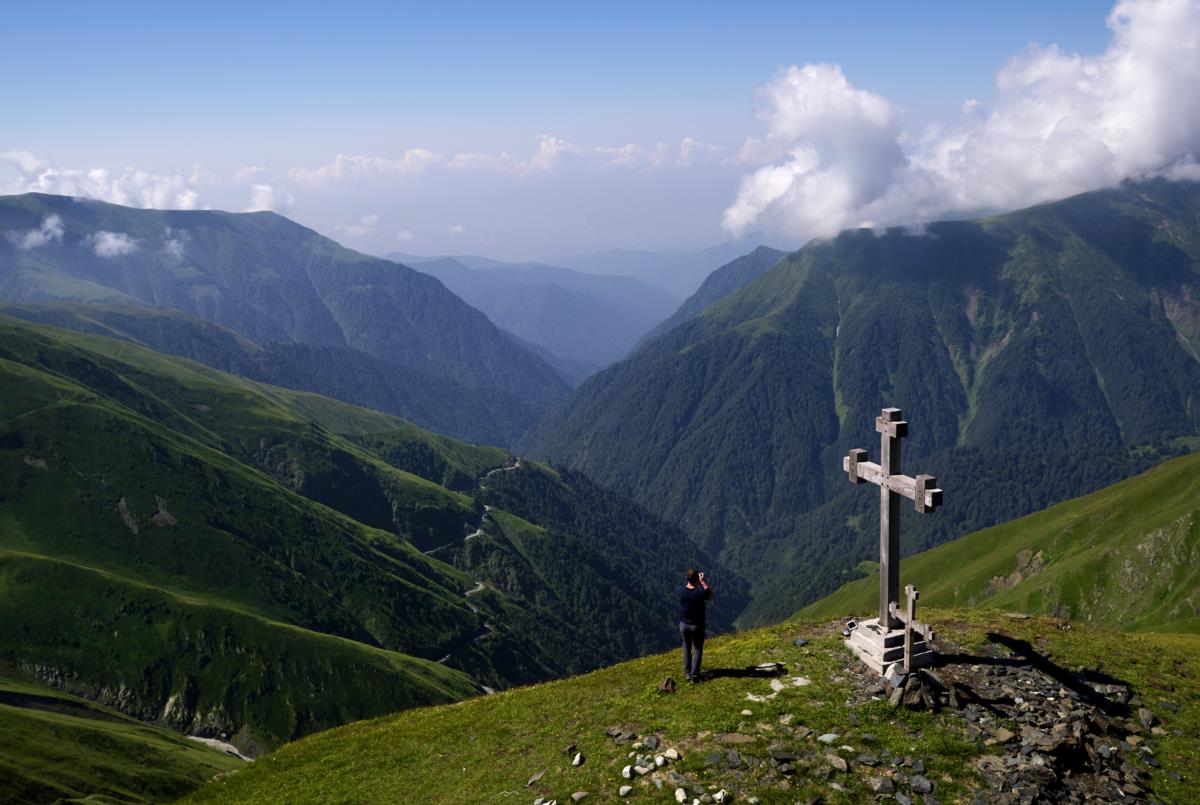
The wind-battered cross atop the Abano Pass. The 2,826-meter pass, with its free wifi hotspot, is a favored rest stop for travelers on the treacherous road from Kakheti up into the Tusheti region.


Gergeti Trinity Church (bottom left) as the morning sun creeps down the flanks of the 5,033-meter Mount Kazbegi (Mkinvartsveri), the highest peak in eastern Georgia.

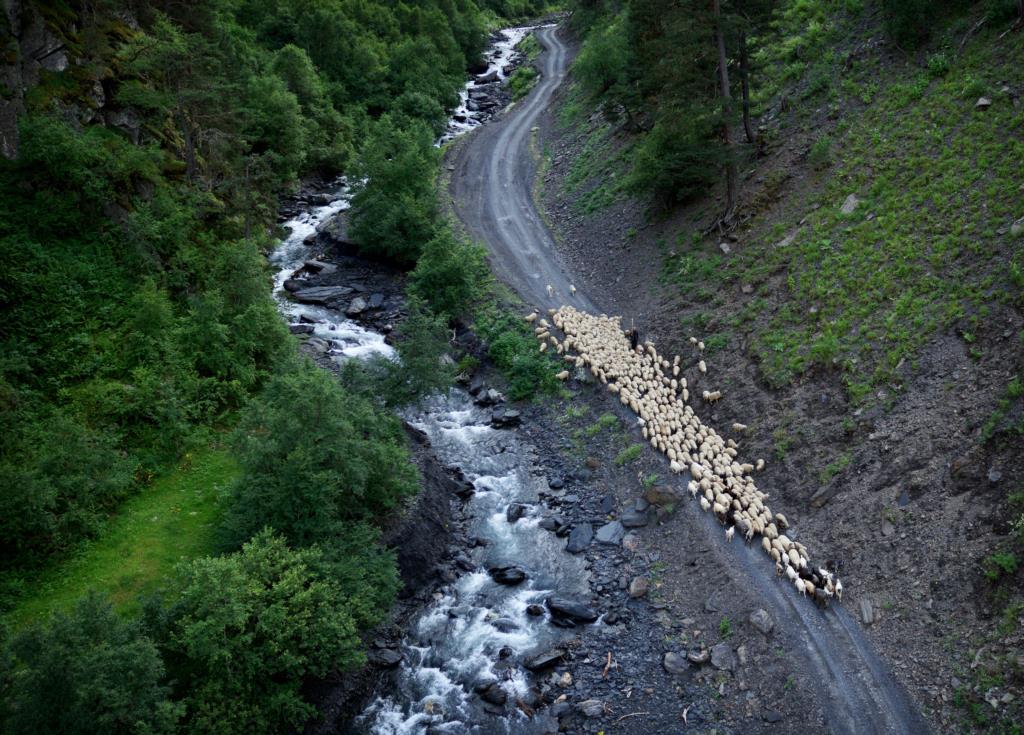
A shepherd leads his flock alongside a river near the village of Khiso. The river runs loud enough to drown out the noise of the 4-kilogram Inspire 2 drone used to shoot this photo.


Morning mist drifts over a small church near Ukhati along the north-south Georgian Military Highway.

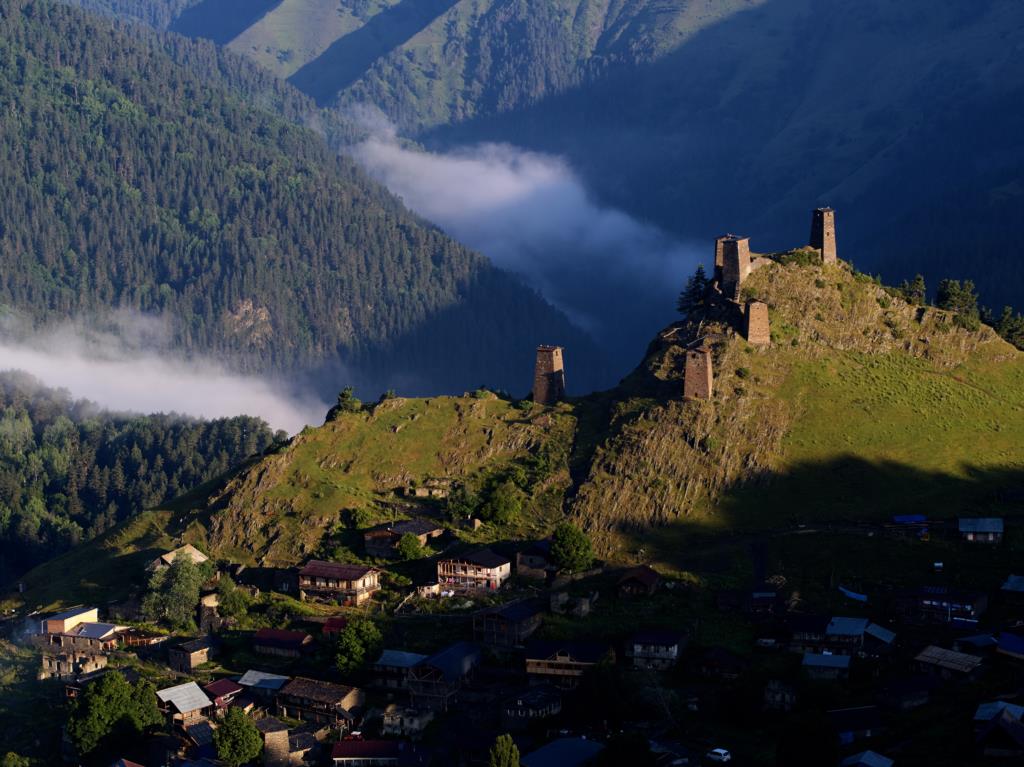
Ancient defensive towers sprout from the top of the village of Omalo in Tusheti National Park, which borders Russia's Daghestan and Chechnya regions.


Sheep stream into the morning sunlight after being released from their corral near Omalo. Livestock are returned to captivity every evening as protection against wolves.

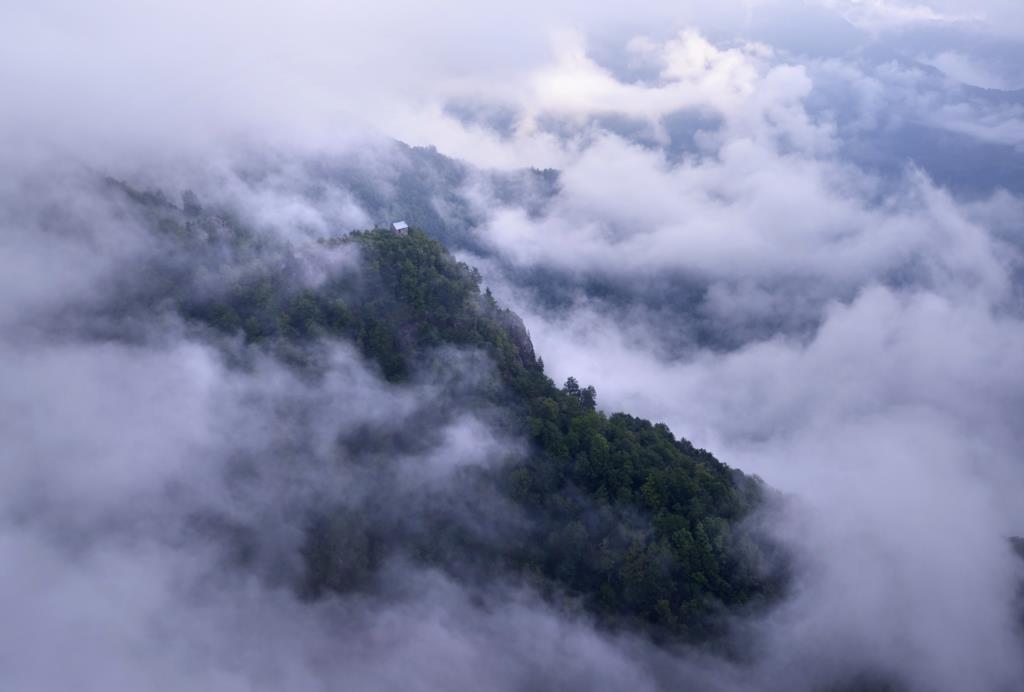
Clouds flow around a tiny church in the vicinity of Gulebi, a town in the southwestern Ajara Autonomous Republic.

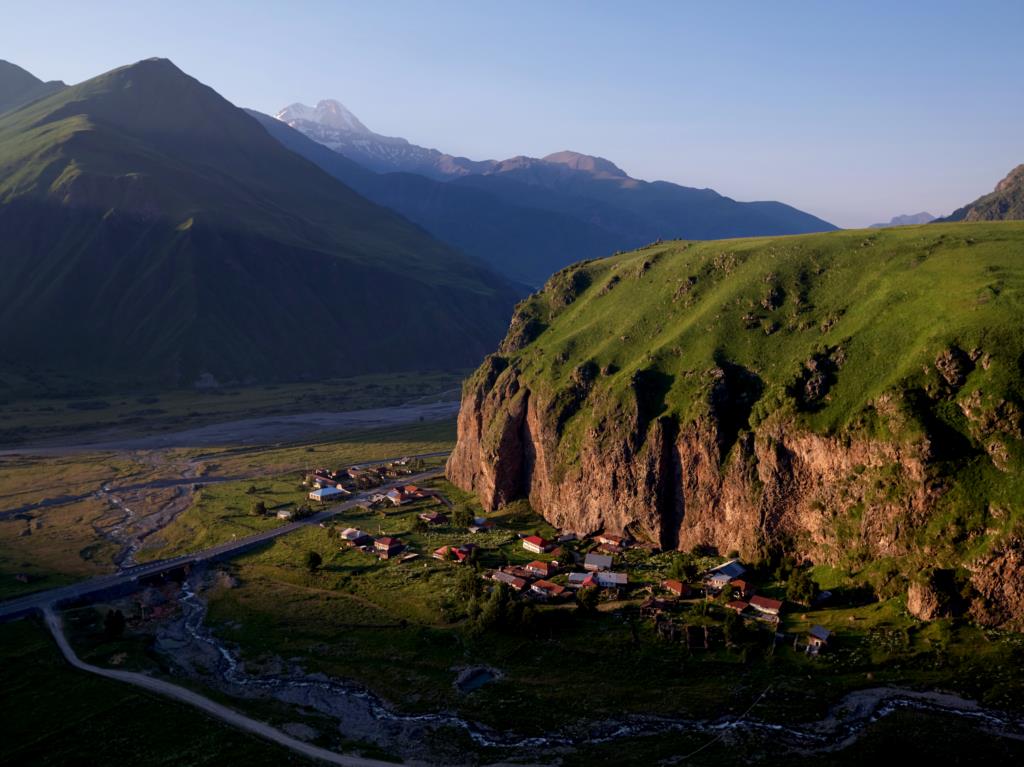
The last light of day catches the houses of Ukhati, on the Georgian Military Highway.

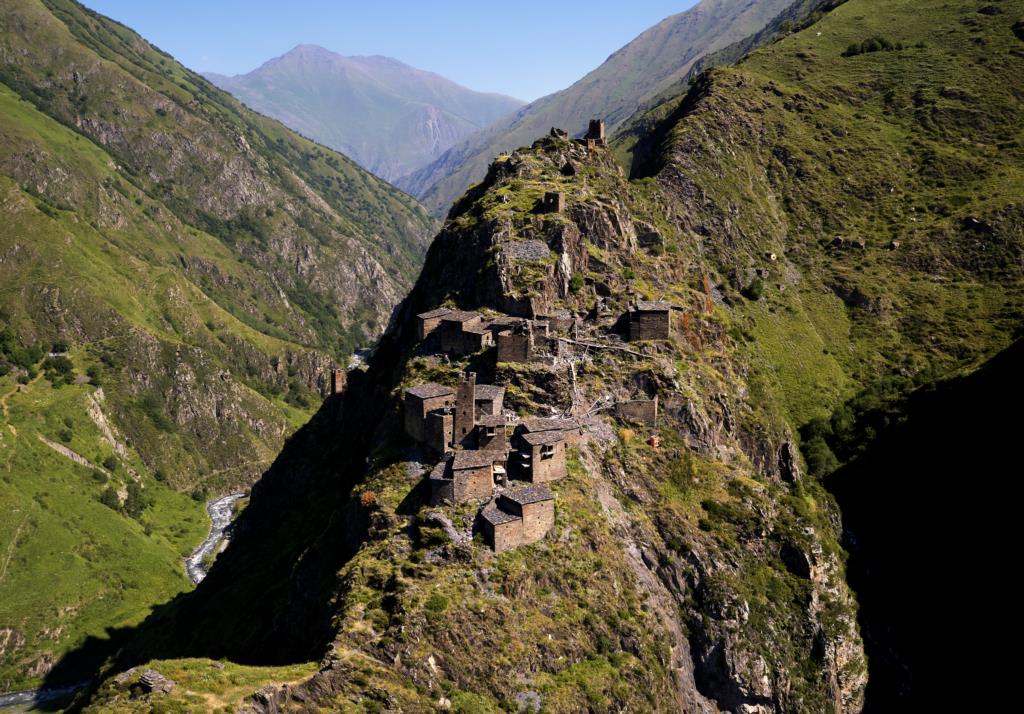
The remains of the fortified village of Mutso, situated atop a razor-sharp ridge near the border with Chechnya.

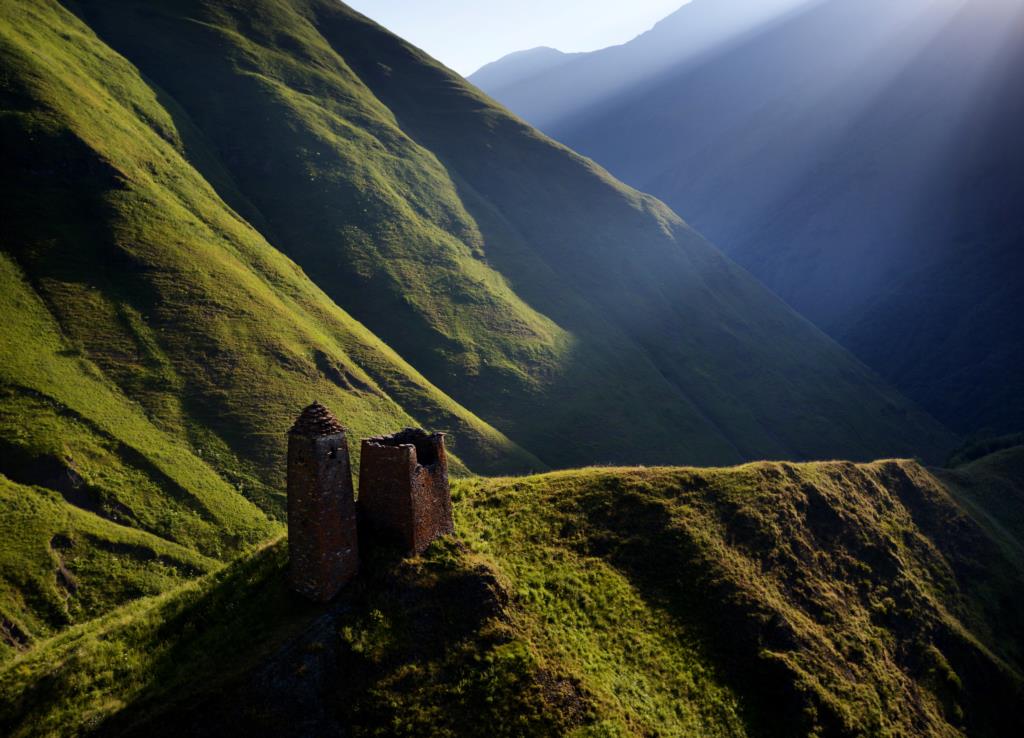
A stone watchtower in the Caucasus Mountains overlooks the Datvisjvari Pass near the village of Shatili.

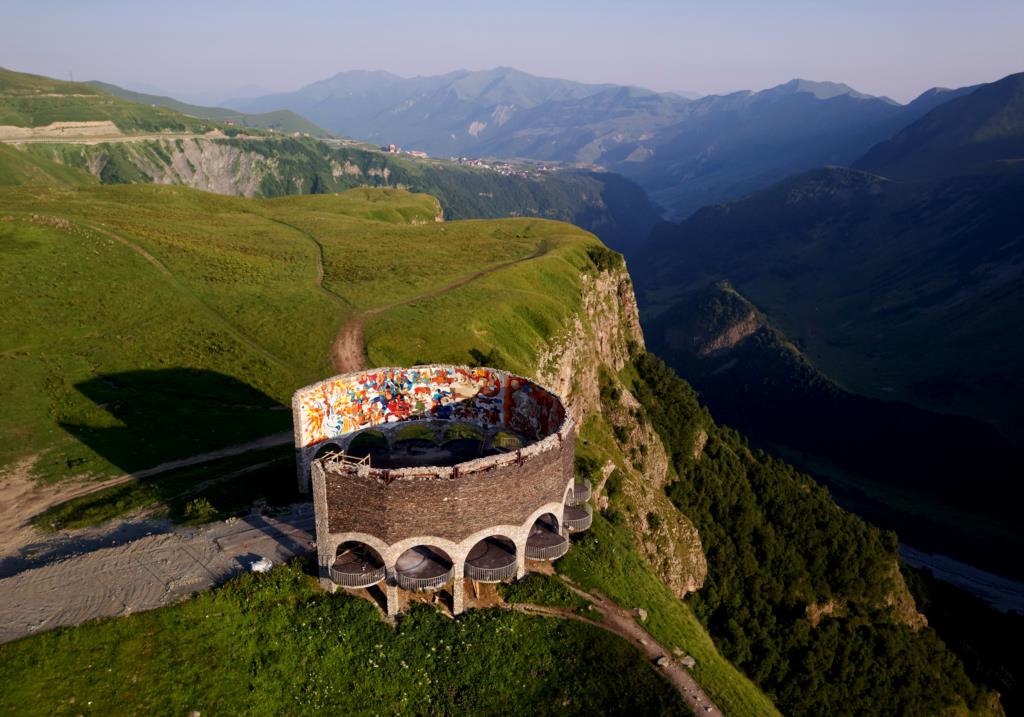
The Russia–Georgia Friendship Monument, a Soviet-era landmark near Gudauri that illustrates various scenes from Russian and Georgian history.

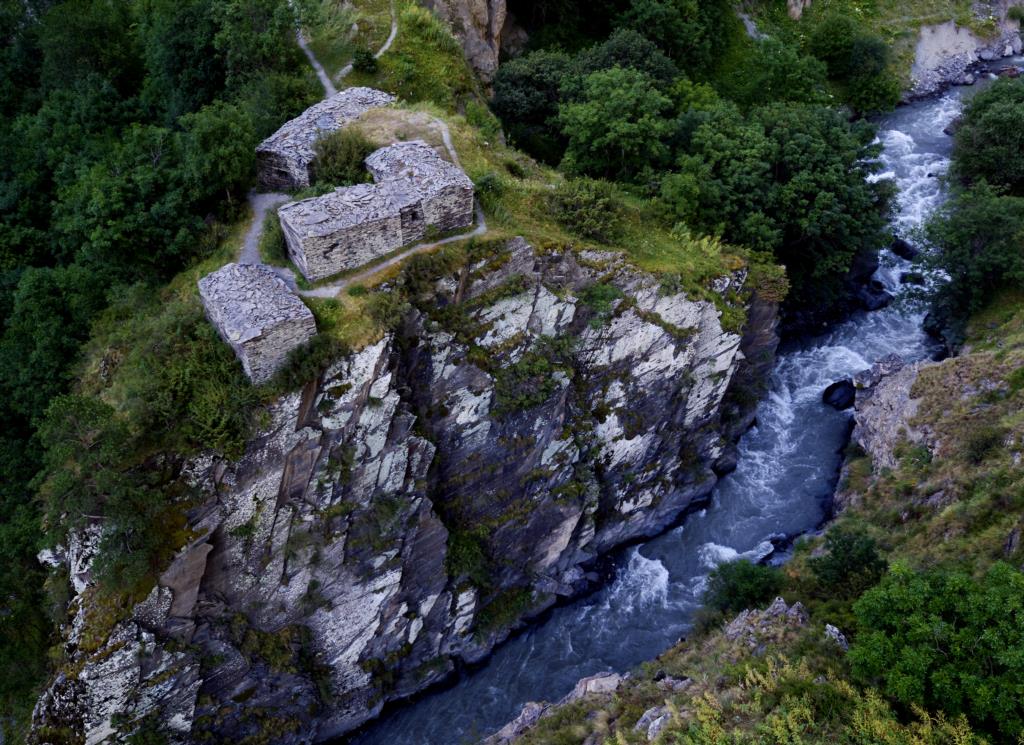
Crypts on a clifftop 1 kilometer from the border with Chechnya. When plagues swept through the region, infected villagers were banished to these stone buildings to await death. Inside, the remains of apparent plague victims can still be seen today.

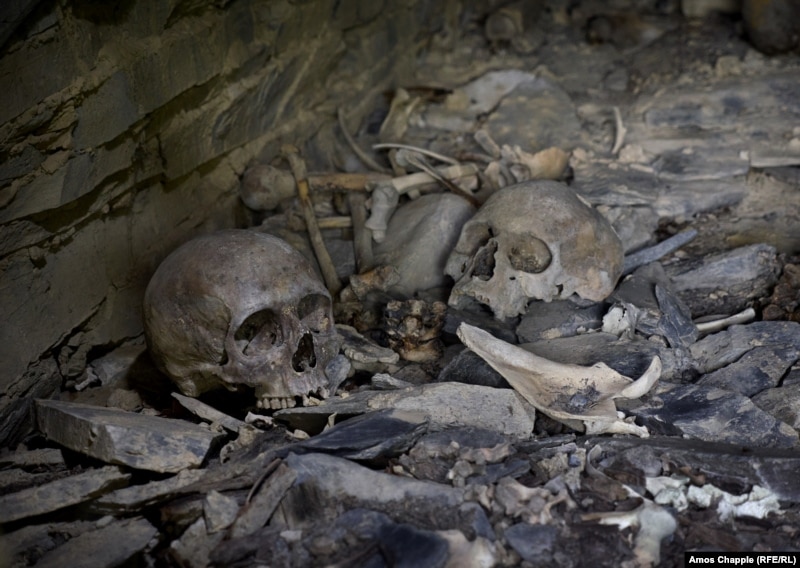

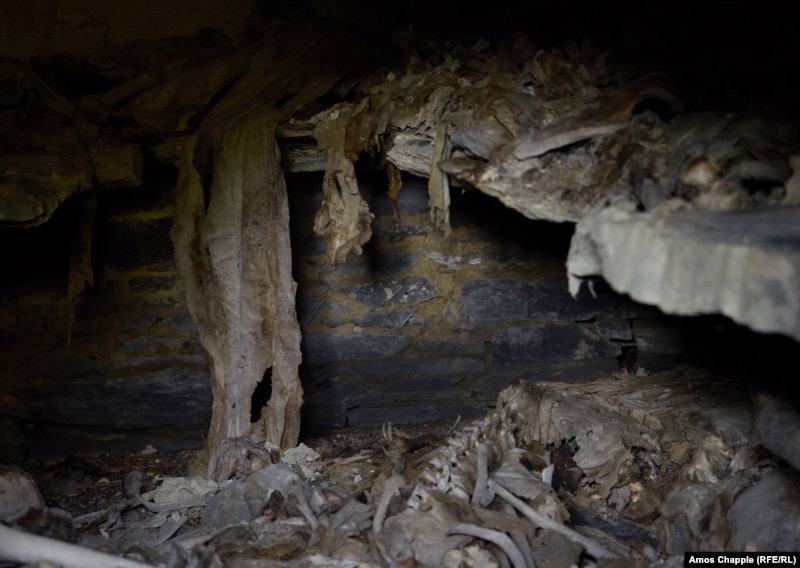

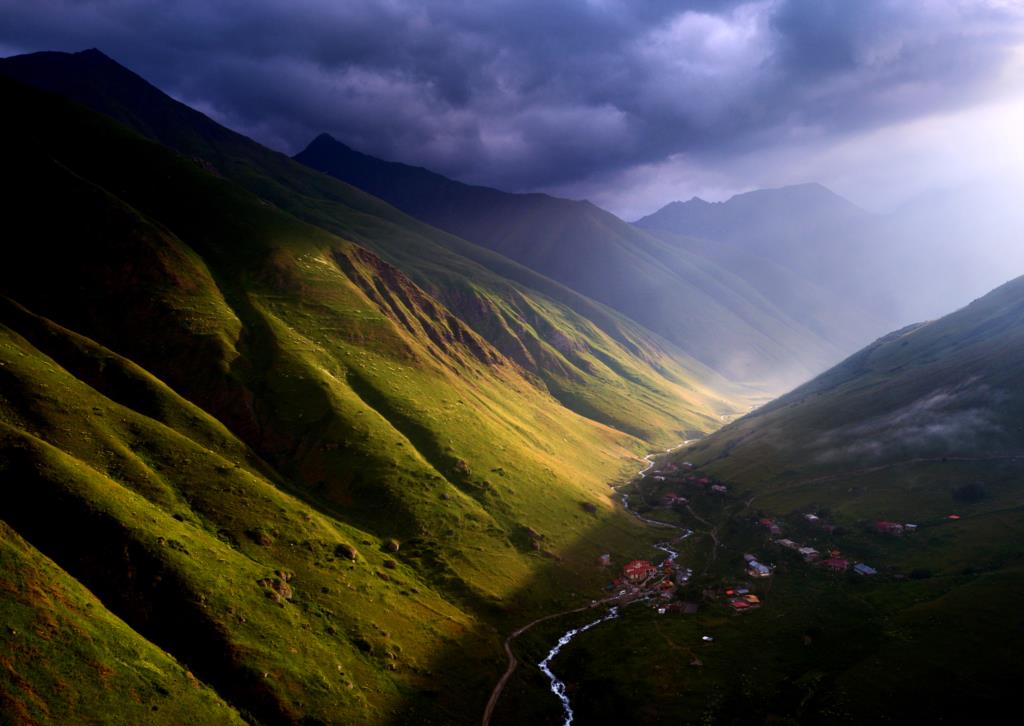
A break in the clouds during a stormy morning in Juta village, high in the mountains of Mtskheta-Mtianeti.
The End Of An Era

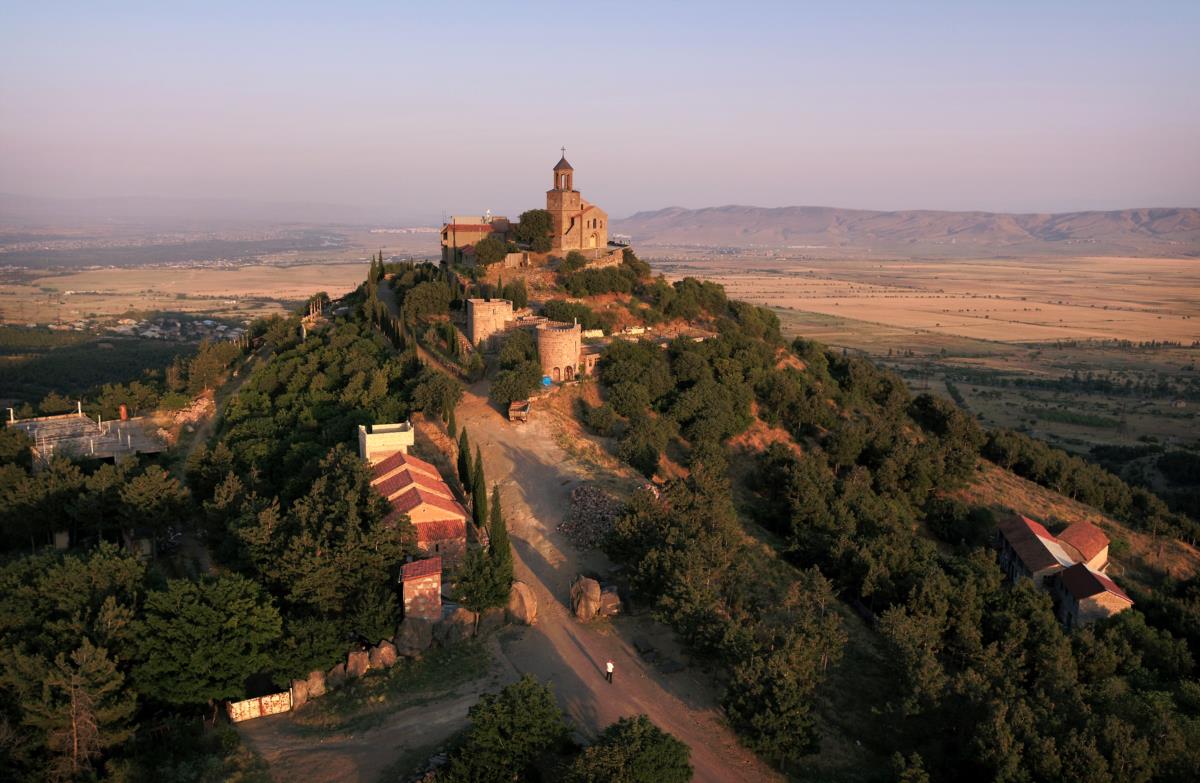
The Shavnabada monastery near Tbilisi, looking like a little slice of Tuscany in the evening sunlight.


The Tserovani refugee camp, near the breakaway region of South Ossetia. Georgians displaced during the 2008 war with Russia now live in the camp, with most surviving off government handouts.

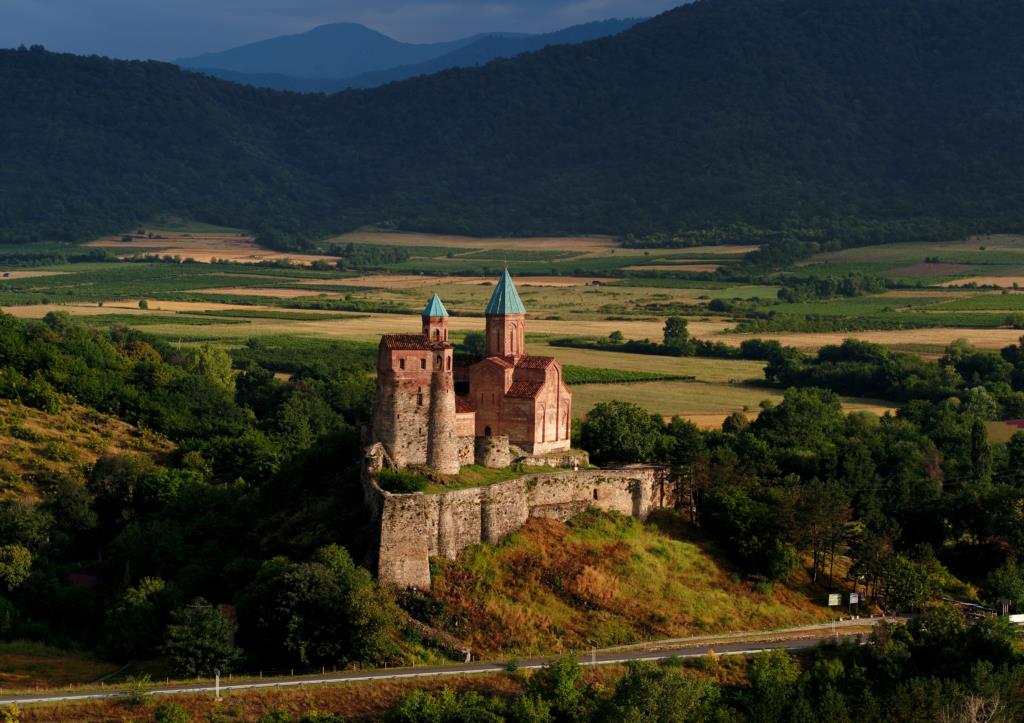
Gremi church and castle, with its backdrop of vineyards lit by the morning sun.

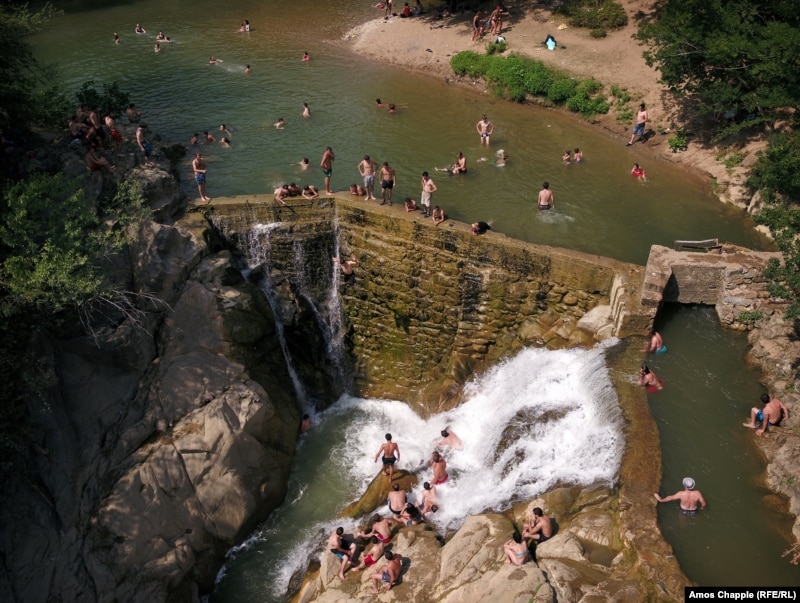
A young brave leaps from the wall of the Samtsvera waterfall, located near Zestafoni, on a 38 degree Celsius day.

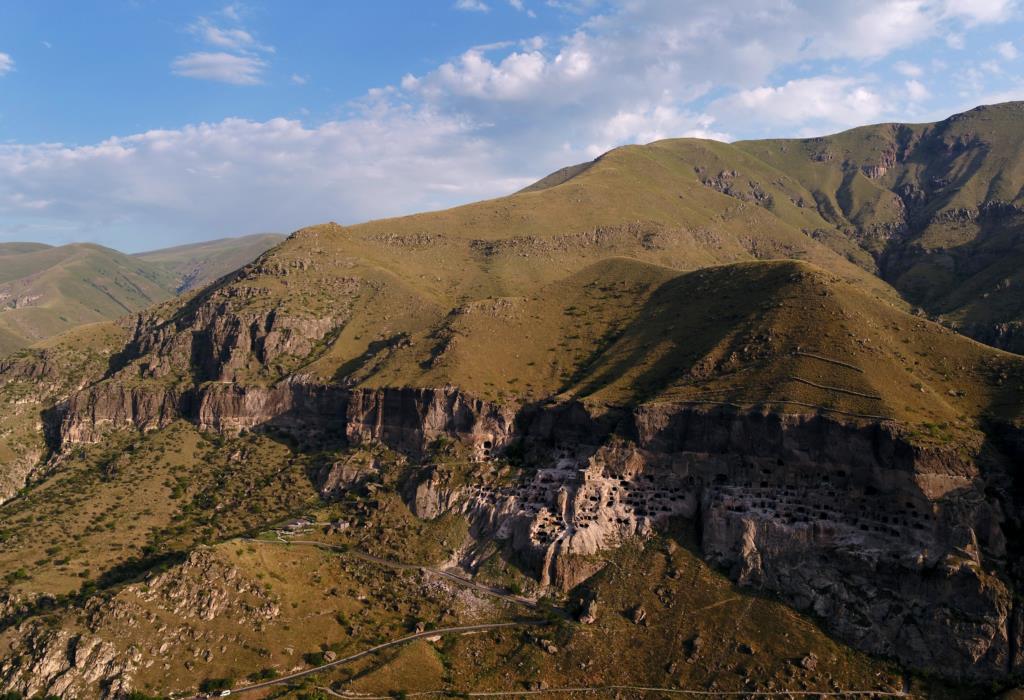
The ancient cave city of Vardzia in southern Georgia.

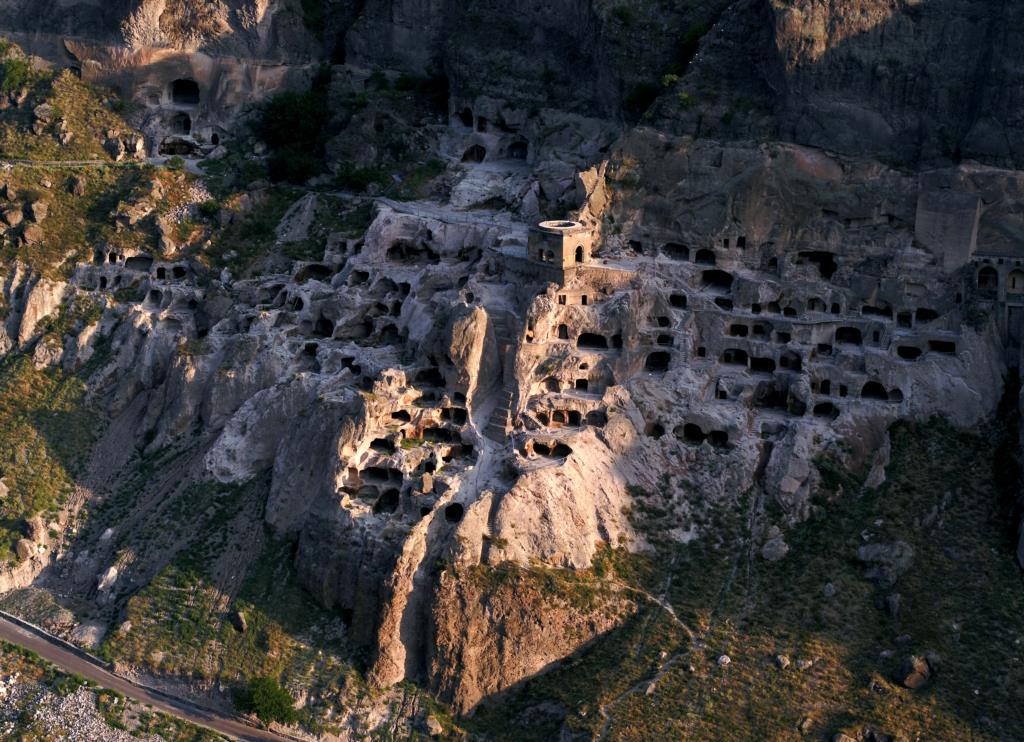
Despite being a busy tourist destination, some of the cave dwellings are still inhabited by a group of monks, who live in a section of the caves roped off from the tourists.

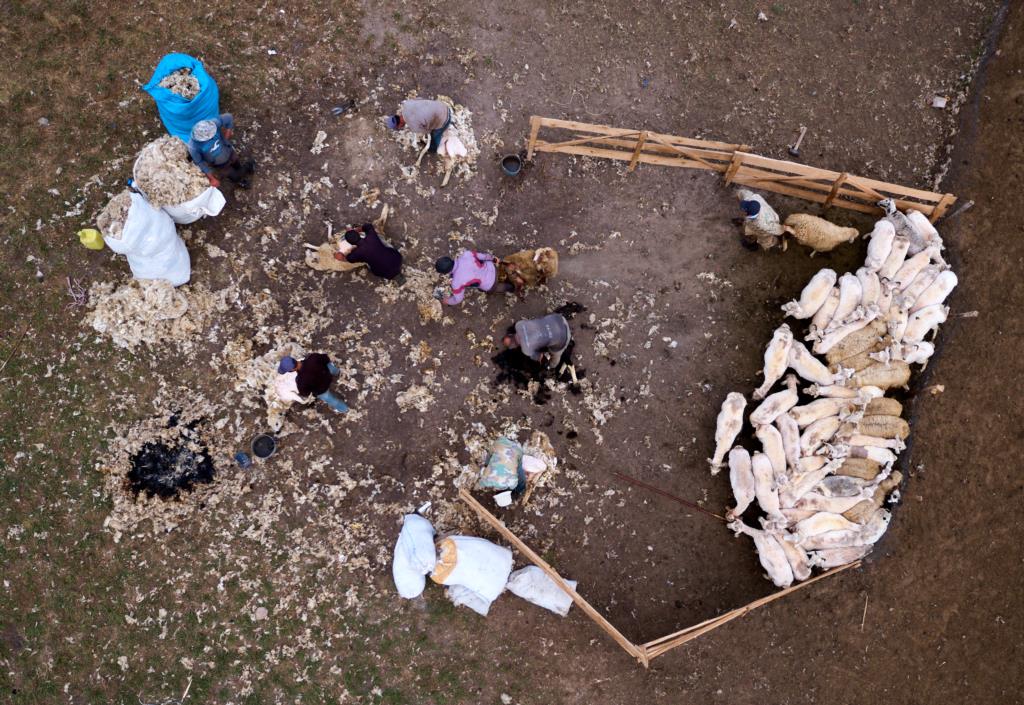
The job of shearing sheep (and one calf!) is almost complete at this shepherd settlement on plains in central Georgia.

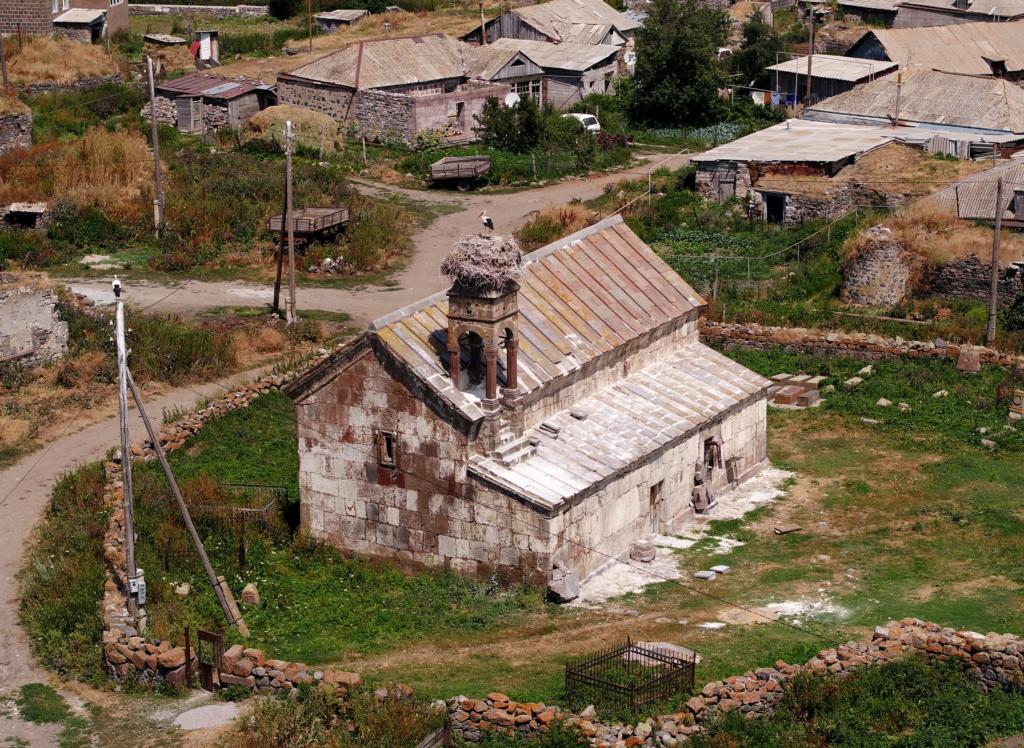
A stork perched atop the ancient Baraleti church, near Tsikhisjvari

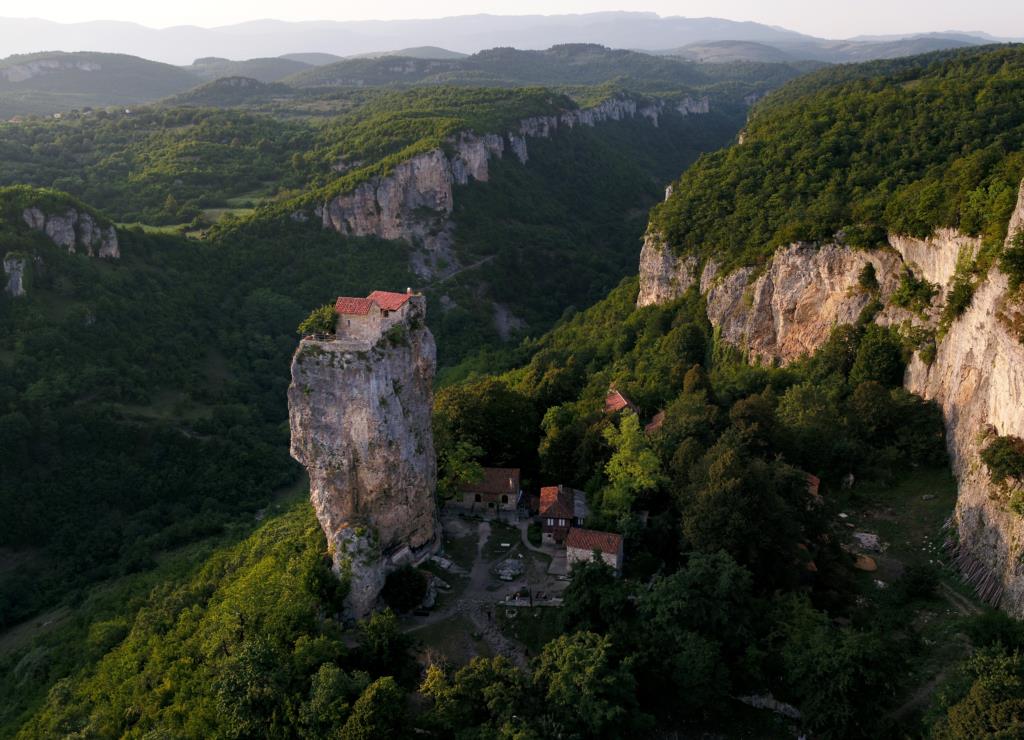
The Katskhi Pillar, where an elderly Georgian monk has lived for the past 24 years in order to be "closer to God." The monk has his food winched up by volunteers from the monastery below.


Khertvisi Fortress, one of the oldest in Georgia. The rock-top fortress was reportedly sacked by Alexander the Great on his march toward the Far East.

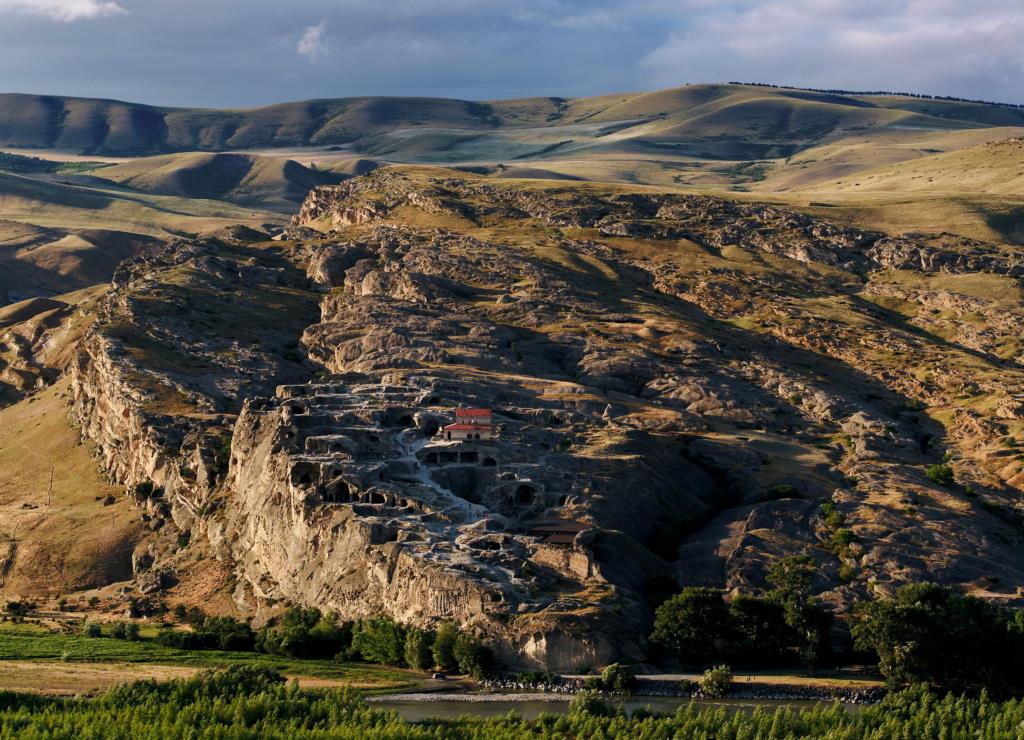
Uplistsikhe, an abandoned rock-hewn town in the central Kartli region that was of one of the earliest settlements in Georgia.


The Alaverdi monastery among the vineyards of eastern Georgia. The monks inside the monastery sing songs about the wine they produce.

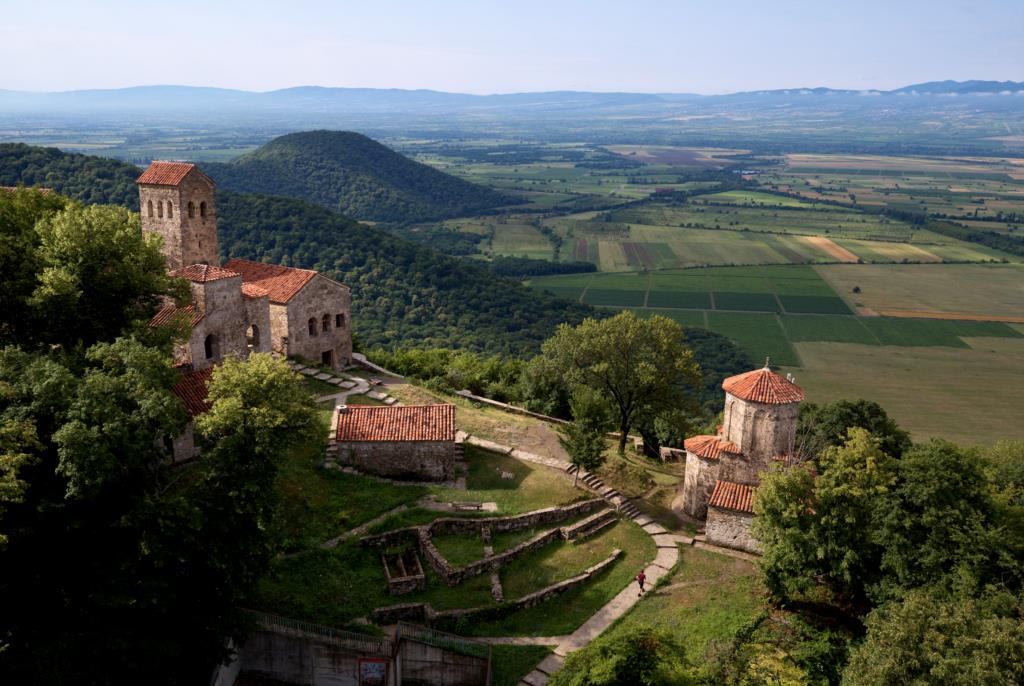
The Nekresi monastery and the fertile plains of the eastern Kakheti region.

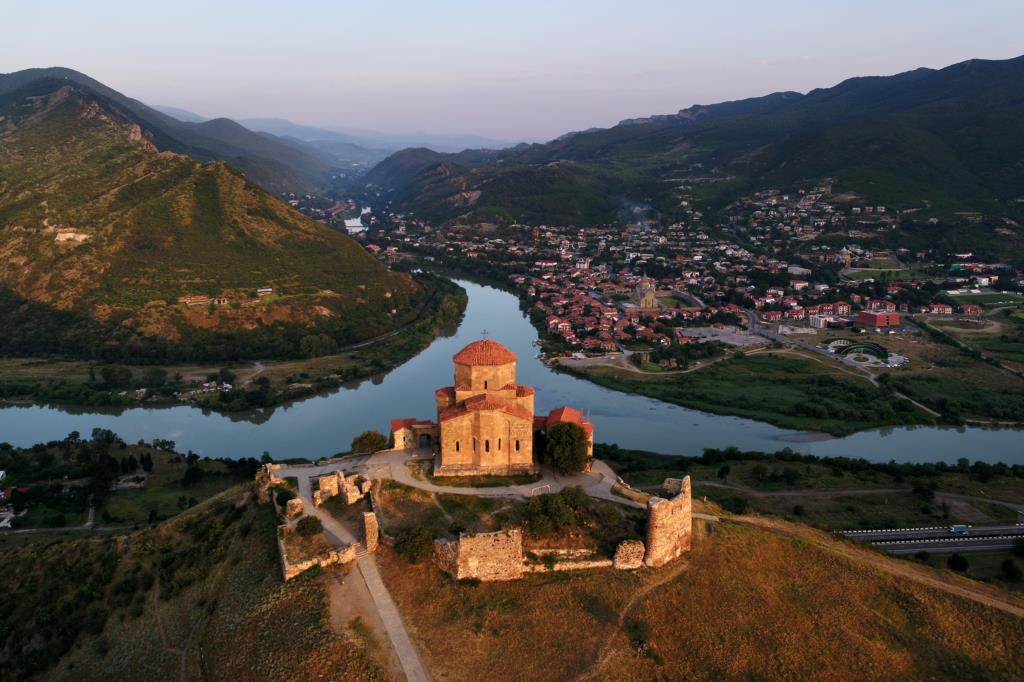
The Jvari monastery glowing in the first light of day. Beneath the monastery lies the confluence of the Mtkvari and Aragvi rivers. In the background is Mtskheta, the ancient capital of Georgia.


The Romanov Palace near Borjomi, originally built as a holiday home for Russia's tsar. After the Bolshevik Revolution the building was used by Josef Stalin for his holidays.

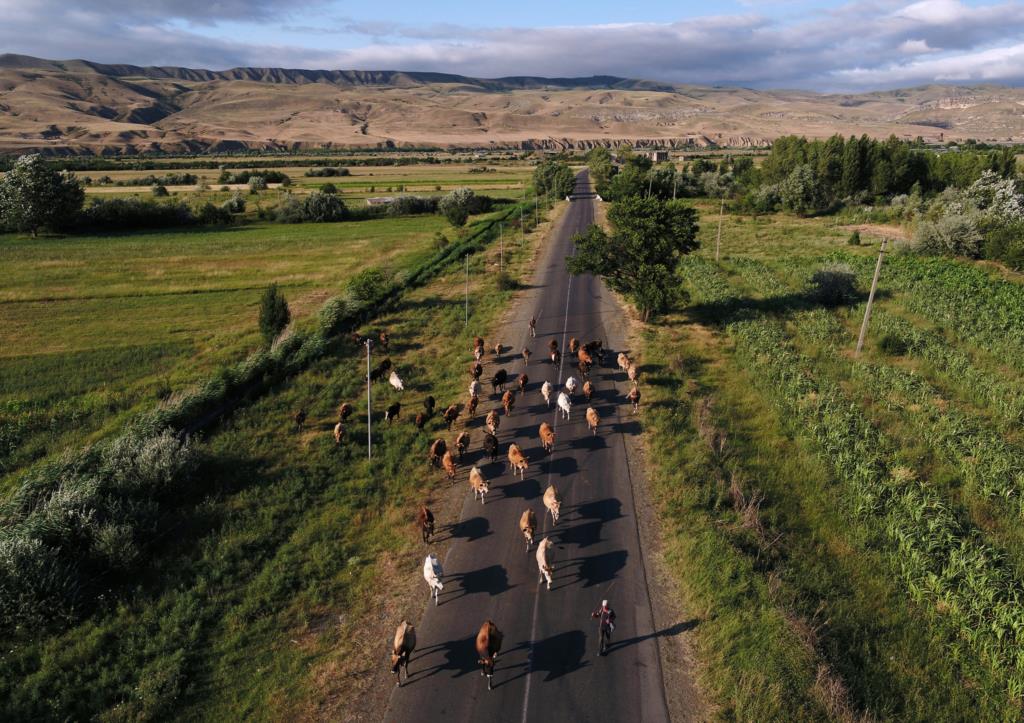
Shepherds drive their herd down a quiet country lane in the vicinity of Gori.

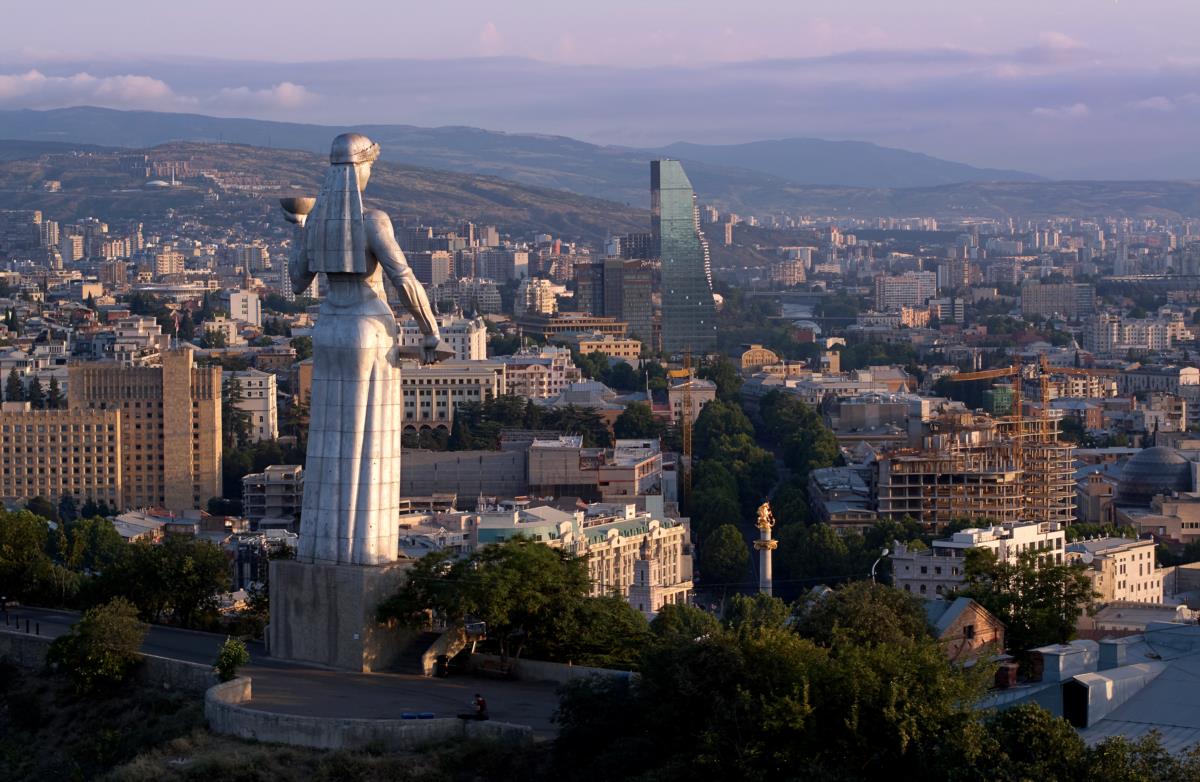
The Kartlis Deda monument, informally known as "Mother Georgia," looking out over the capital.

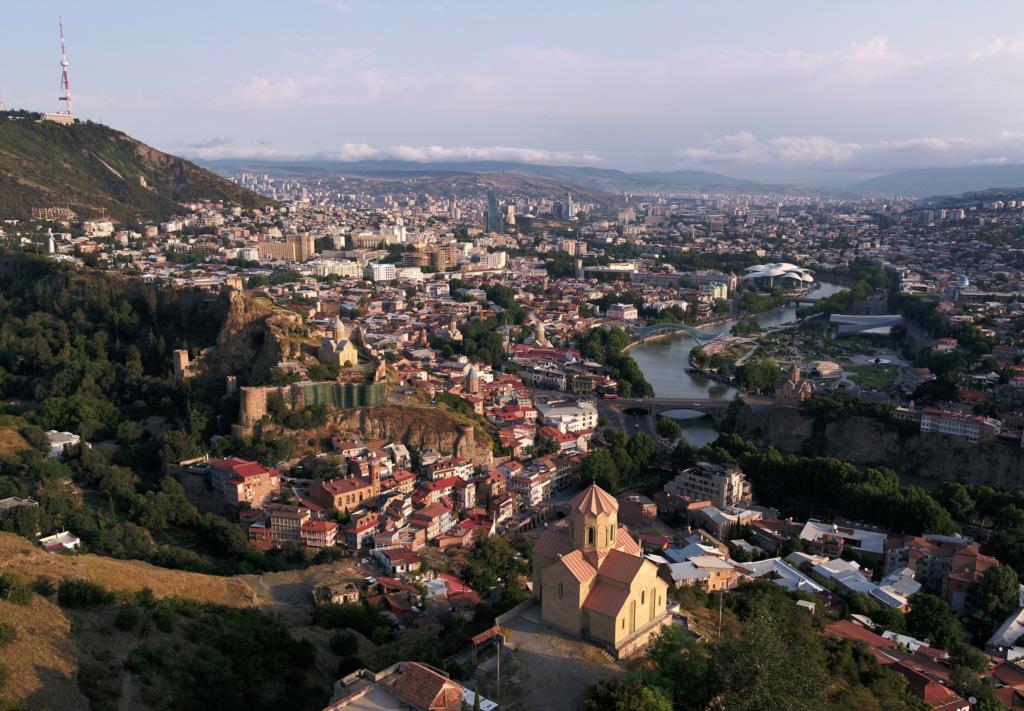
The capital in morning light.

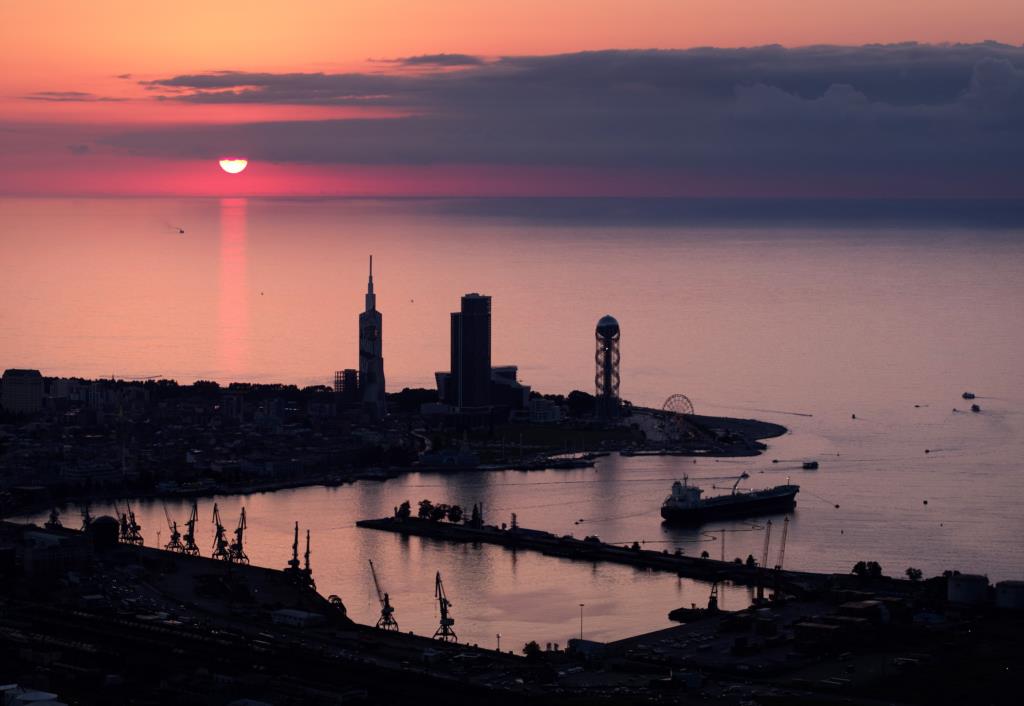
The coastal town of Batumi silhouetted in the setting sun.

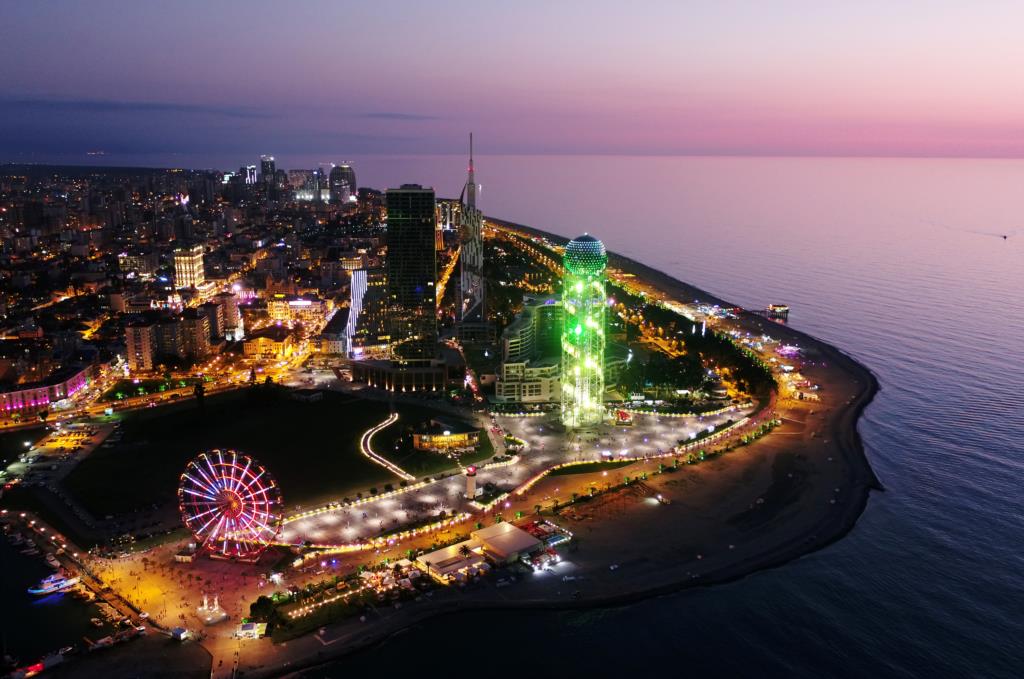
Batumi after dark. After a bitter separatist war in Abkhazia in the early 90s, Batumi, with murkier water and less appealing beaches than the breakaway region to the north, has gone all out to attract tourism with casinos and high-rise buildings.


Turning away from the neon and nightclubs, this picture shows the quiet hills around Batumi’s Convent Of The Holy Trinity.


Kutaisi, Georgia’s third-largest city, on a still, hazy morning.

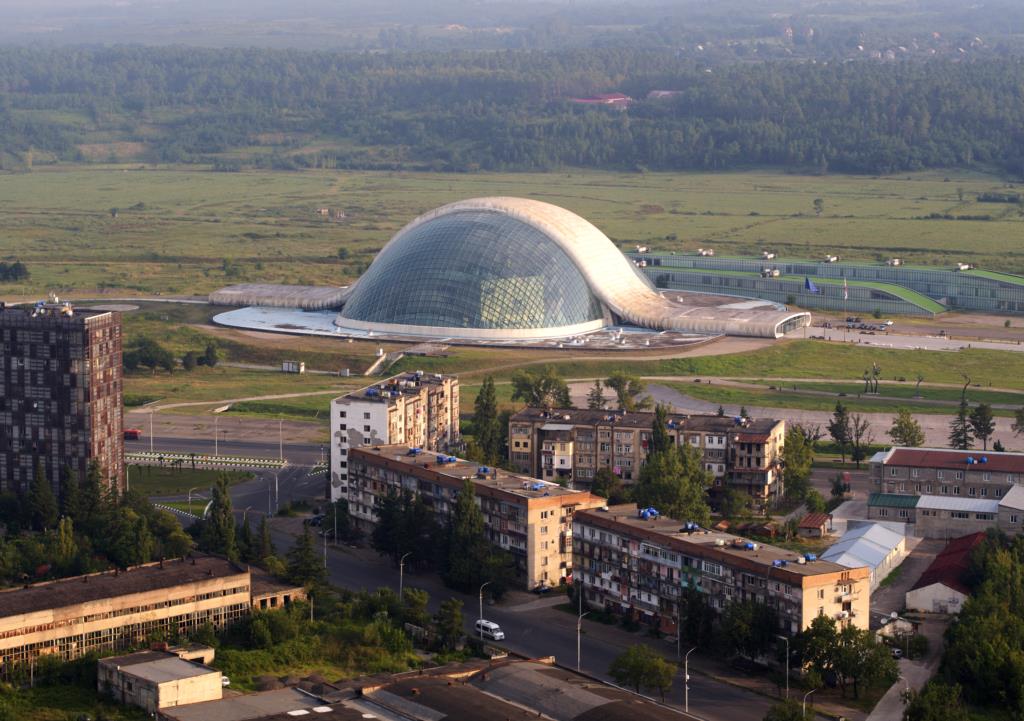
Georgia’s parliament building in Kutaisi. The controversial structure was built on the site of a Word War II memorial. During the demolition of the Soviet-era monument a woman and her eight-year old daughter were killed by chunks of flying concrete.

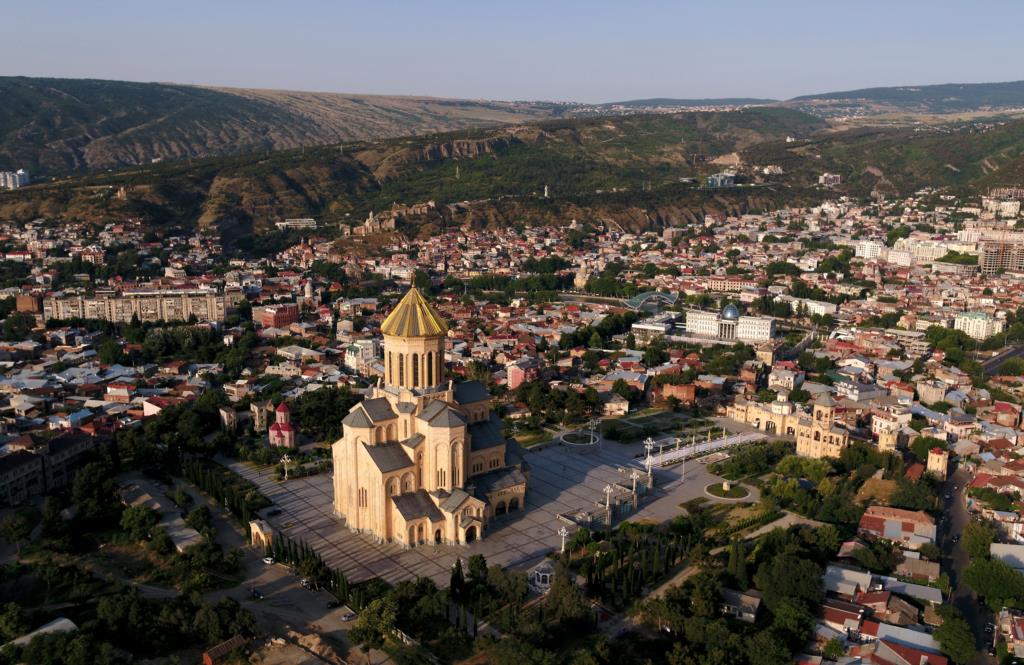
The monolithic Holy Trinity Cathedral looming over Tbilisi.

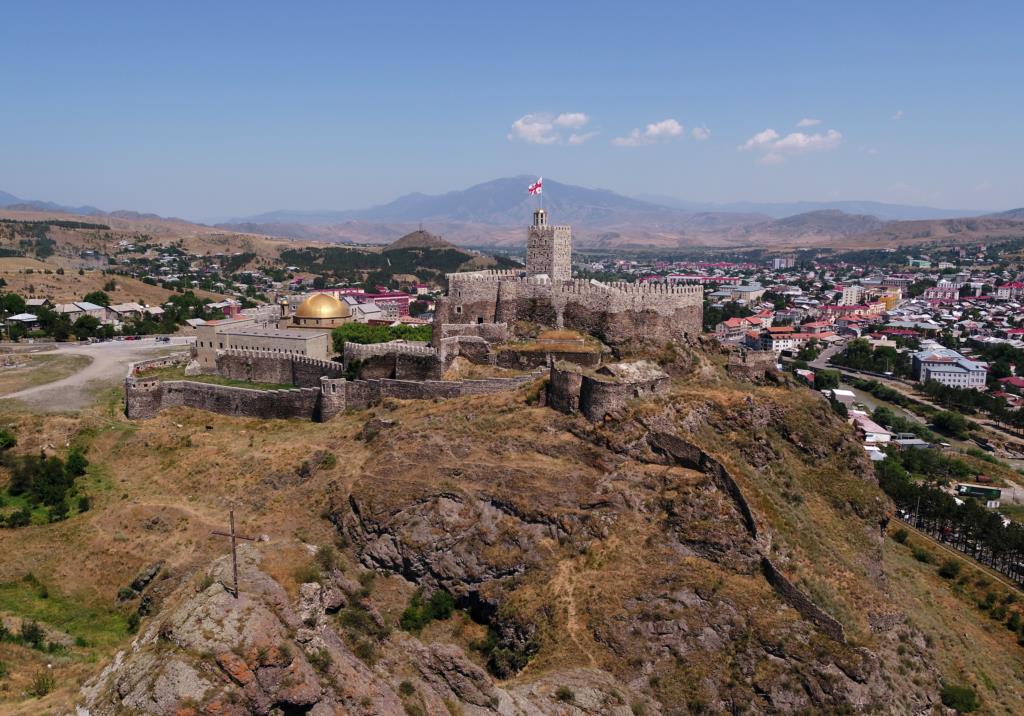
Rabati castle, looking out over the multicultural town of Akhaltsikhe, where you can find a synagogue, church, and mosque within a stone’s throw of each other.

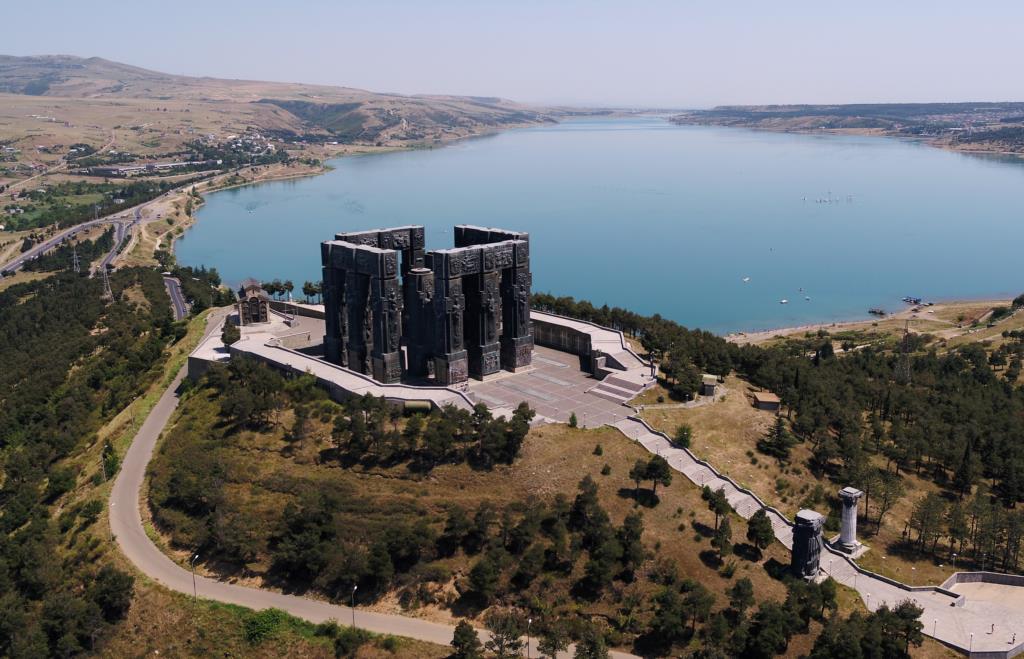
The Chronicles Of Georgia monument. The little-known (by tourists at least) landmark is the work of Zurab Tsereteli, the same artist behind the divisive Peter the Great statue in central Moscow.

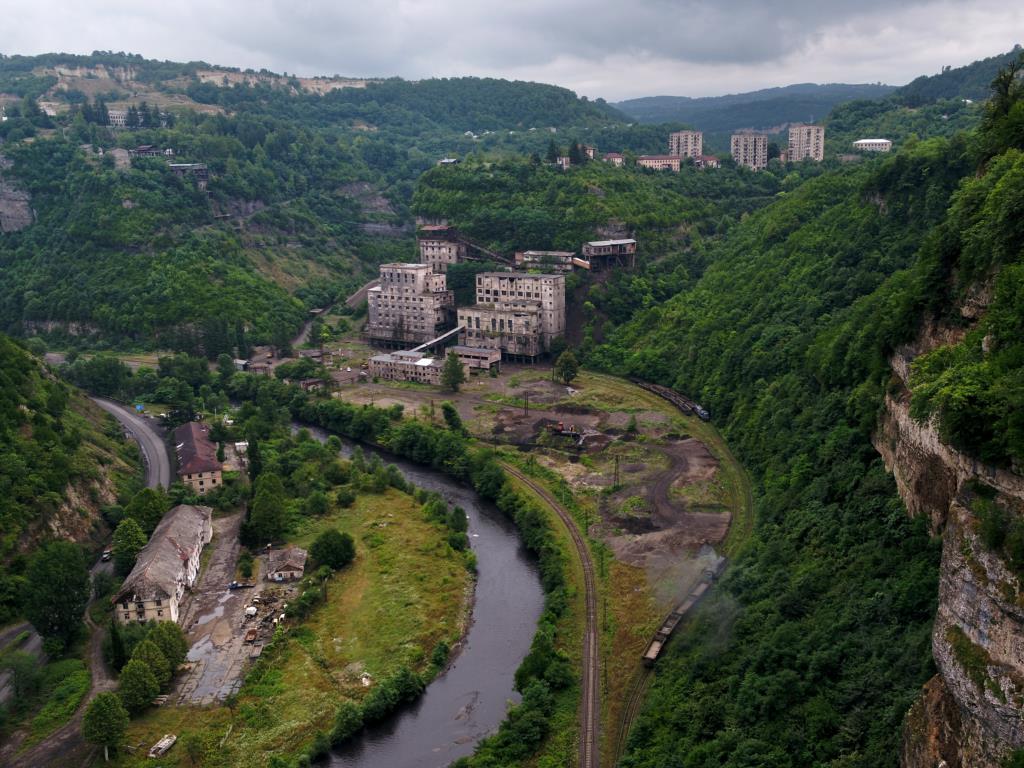
A valley in the hardscrabble town of Chiatura, where manganese is mined. This factory processes the rare mineral and makes it ready for transport to steel-working operations in Georgia and abroad.

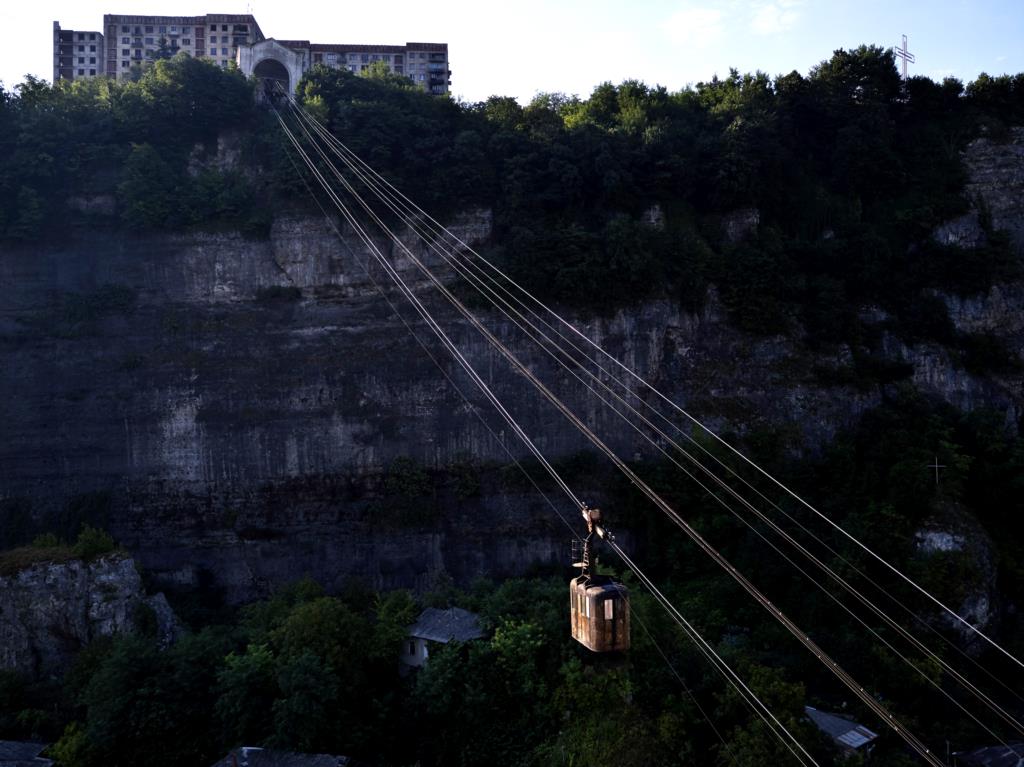
A cable car in Chiatura. The town’s dizzying geography inspired Soviet engineers to install a network of "rope roads" to transport workers up to their mines.


This passenger cable car has run almost continuously since its first run in 1954.
 42°39N 45°32E
42°39N 45°32E